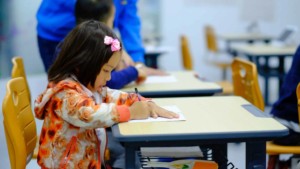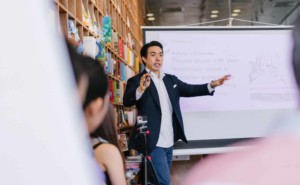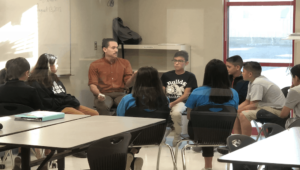Post-Secondary Preparation Through Guidance and Advisement

When we think of guidance and advisement, in regards to our students, we may think of the normal guidance counselors and academic advisors. Individuals in these professions are key to student development. Though, if implemented properly in our schools, guidance, and advisement can show themselves in many forms through different entities. We all play a role in student success, meaning parents, teachers, counselors, advisors, and even peers. This factor alone is a key motivator of why advisory is so important and why it should be a priority in our schools. The methods we use to guide and advise our students are like puzzle pieces to their now and their future. Students can benefit from advisory through:
Personal development. Patrick Cook-Deegan of The Five Tips for Teaching Advisory at Your School suggests that “At its best, advisory can help students discover a sense of purpose and craft more meaningful lives.” Idealistically, parents/guardians are the first points of contact for guiding and advising students even before they enter our schools. For those students who do not have the support of their parents makes other forms of guidance that much more important. Students come to our schools from various socioeconomic backgrounds and unique experiences that often follow them into the classroom. Some of their experiences take a toll on them emotionally and mentally, which has shown in many cases to have an effect on their academic performance and decision-making. We stress the importance of academics, but we must also dedicate ourselves to our students’ social and emotional learning (SEL). Advisory is a space that can address core SEL competencies.
Relationship building. Advisory is an opportunity for students to connect with their teacher(s) and peers through different activities and on levels that enhance their growth. This is an environment for them to feel safe and supported and to learn the importance of teamwork outside of academia.
Setting long-term goals. Accountability and student goal-setting are key in advisory. Students must ask themselves, “What am I doing now that will help me reach my end goal?” Further, we should ask ourselves, “How am I helping these students to reach their end goal?” This is an ongoing process of work and discussion on both ends to ensure that students are making the best decisions for their future.
So, what exactly do these methods look like? How do we, other school personnel, contribute to our students’ success, between them entering our schools and, years later, venturing out into the post-secondary world? We reflect on our roles, collaborate, and provide the necessary resources for our students to be equipped. We take accountability for our students and their emotional well-being and educational development, understanding that we, too, have a role to play alongside guidance counselors and academic advisors.
As a teacher at Duluth High School, located in Duluth, GA, I received the opportunity to work on the Advisement team. The mission of advisement is to equip the students of Duluth High School for life success through impactful advisement lessons based on the following themes: Relationship, Respect, Resilience, and Careers. In addition, our vision is that through the weekly advisement lessons, the DHS students will be provided with the necessary resources for success in their high school and post-secondary endeavors. Although most of our lessons are universal, we differentiate specific ones by grade level. For instance, freshmen may have a lesson dealing with time management, while seniors may have a lesson dealing with resumes and cover letters. Though both are important, they cater to students on their appropriate levels.
Advisory happens every Tuesday during Connect 25, also known as C25, which is a 25-minute advisement period before or after lunch at DHS. Students go to classrooms, usually with teachers they do not take, and are advised by those teachers through various lessons. During that time, our lessons are displayed through the following methods.
Career Spotlights
Our advisement team reaches out to community members with different professions, in which they create videos about their occupation and the steps it took to acquire their positions. Some of the occupations we’ve featured include lawyers, athletic directors, and journalists. Our goal is to provide students with real-life examples from a variety of professions to guide them in their own professional decision-making when the time comes. The career spotlight features have even included our very own faculty and staff members’ spouses and loved ones. As the saying goes, it takes a village.
Ted Talks
The Ted Talk lessons cover topics on mental and emotional health, as well as relationship building. The videos are embedded in a PowerPoint that includes pre and post video discussion questions, which leads to meaningful whole-group conversations. Here are a few of the many lessons we’ve covered:
5 Ways to Kill Your Dreams, by Bel Pesce
Has there ever been a time when you had a goal that you did/did not succeed in making happen? What were your emotions when that occurred? Why do you think it’s so hard to make our goals become reality? We posed these questions to our students, which led us to meaningful discussion before watching the video. Following the video, we discussed each of the five ways that were covered, and students were encouraged to self-reflect and share their thoughts on how those five ways applied to their lives.
Why our screens make us less happy, by Adam Alter
In a world of cell phone addicts, this lesson was completely relatable to our students, in which we explored the dangers and advantages of technology. Following the video, we discussed techniques that helped in cutting back on screen time.
Where joy hides and how to find it, by Ingrid Fetell Lee
Where do you find joy? Students’ answers varied, as this lesson focused on finding joy in your life in the most unexpected places.
The joy of surfing in ice cold water, by Chris Burkard
In this lesson, students explored the idea of getting out of their comfort zones. What is something that you have done that you were afraid to do? Reflecting on their past experiences helped students to think deeply before watching the video. Following, students dug into those initial feelings of difficulty and stress when escaping the comfort zone and how they impacted the end result of joy.
Hands-on activities
It is important for students to develop interpersonal and lifelong skills, and what better way to hone those skills than with hands-on activities? We believe in giving students the space to engage in purposeful activities that cater to their development. Two examples of our hands-on activities include:
Communication Lesson: Our 9th and 10th grade students participate in an interactive activity based on improving one’s communication and feedback skills. In pairs, students turn back-to-back; one person describes the image on the board without using the excluded words, while the other serves as the illustrator. Following each round, students debrief, discussing their process and results. The activity ultimately focuses on the importance of listening, teamwork, and effective communication.
Creating a Resume: Our 11th and 12th grade students have the opportunity to create their own resumes. The lesson includes a fill-in-the-blank resume handout, as well as lots of modeling, practice, and collaboration. Teachers also show Jason Shen’s Looking for a job? Highlight your ability, not your experience Ted Talk, which helps students to identify those qualities within themselves.
Along with the advisement lessons, students also participate in the Pulse Check initiative. Every Friday, teachers are given a report of student grades, in which students are to record on their pulse check sheets. Students also record their goal grades next to each of their academic courses on the sheet. The teachers initial the sheets as an indicator that the grades have been recorded and students are aware of their academic status. Once initialed, teachers collect the pulse check sheets, and they, too, are able to have a visual record of students’ progress over the academic semester. Because C25 teachers do not teach many of the students, it makes the pulse checks even more significant, showing that they are holding every student accountable for their success. Based on those pulse checks, students also use C25 as a time period to study and work on assignments for their classes. Connect 25 has shown to be an effective period of intervention that sends the message that every moment is a teachable moment for our students.
Every student participates in Connect 25, but a particular group of students are afforded even more support through their high school journey. For students who receive Special Education services, another method of advisement they receive is through their case managers. Case managers constantly monitor their caseload students’ progress throughout the academic year, and they serve as the point of contact to help steer those students in the directions of their goals and interests. In my experience as a case manager, students complete transition questionnaires that help them to think about and prepare for their life after high school. The questionnaire includes the following categories: Post-secondary, Education/Training, Employment, Adult Living Skills, and Community Participation. As students matriculate through school, their post-secondary goals may change. Some students foresee college, while others want to dive into the workforce. Regardless, as a case manager, it is important to guide students through those transitions and help them to make the best decisions.
If a student does not have the parental support at home, they should feel assured in the fact that they have the support from school personnel. Sometimes student situations are beyond our control, something that a Ted Talk or whole-group discussion cannot resolve, in which it is necessary for them to seek guidance from the counselor. Nevertheless, our goal should always be to examine the ways we are providing guidance and advisement opportunities for our students, as presented above. They need us. For our students, every moment counts.
For more, see:
- How the Micro-Credential Revolution is Transforming Professional Learning
- Video Coaching for Professional Learning
- Conspiracy of 10 Lessons and Innovations Drive Postsecondary Learning
Stay in-the-know with innovations in learning by signing up for the weekly Smart Update.






0 Comments
Leave a Comment
Your email address will not be published. All fields are required.